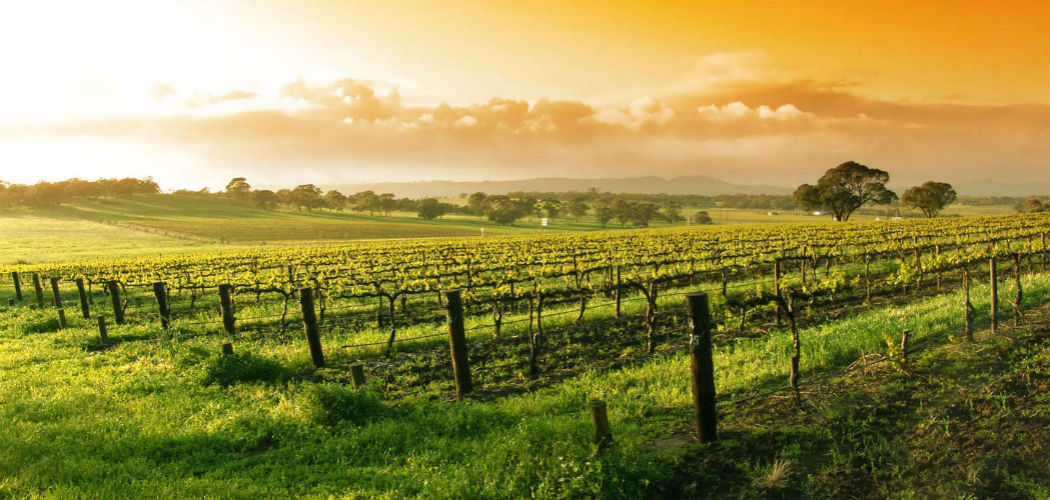Originally published by Jim Carlton via The Wall Street Journal
Someday, when California’s persistent drought is finally over, wine lovers may lift a glass to its memory, toasting the extraordinary 2014 vintage it made possible.
While the three-year dry spell has inflicted widespread economic damage on the Golden State, especially to its giant agriculture industry, an exception is the heart of its famed Wine Country—Napa and Sonoma counties north of San Francisco. Here the warm days, cool nights and dry weather have produced grapes of taste and quality that many vintners say they haven’t seen since the last drought in 2007-2009, and perhaps even better.
“This year’s vintage could be one for the ages,” said Michael Coats, co-owner of Valerie’s Vineyard in Sonoma County, which specializes in Pinot Noir.
That sentiment is echoed all over the two counties, which produce most of America’s high-end wines. Part of the reason: Reduced water forces the grapevines to produce smaller berries, which results in sugar and flavors being more concentrated, said Michael Honig, president and co-owner of Honig Vineyard & Winery in Napa County. If there is too much rain, he said, the grapes can be covered in mildew and mold.
“If there’s a silver lining to the drought in terms of wine grapes, it’s that they are really drought tolerant,” said Mr. Honig. He says his winery, like others, is enjoying another bonus of dry weather: With grapes ripening faster under the endless sun, vineyards are being harvested weeks earlier than normal—avoiding problems like autumn storms.
Related
California’s Drought Changed How the State Produces Electricity
The drought-enhanced vintage comes as good news after the Napa-Sonoma wine industry was literally rocked by a magnitude 6.0 earthquake on Aug. 24. The quake toppled numerous wine barrels and caused other damage, in addition to destroying or damaging hundreds of buildings in Napa, Calif., and other cities. Quake-related losses to the wine industry totaled $80.3 million, according to estimates by Napa County and the city of Napa.
The quake caused less damage than it could have. Because the grape harvest was just beginning, many vintners had emptied barrels and cleared out warehouses to make room for the new grapes, said Gladys Horiuchi, spokeswoman for the Wine Institute, a trade group in San Francisco. And this harvest is a promising one, she agreed. “We’ve always had pretty good vintages during drought years,” she said.
Grape quality looks to be good in other wine-producing areas of California, too, though winemakers face different challenges, such as having too little tank space for storage, said John Aguirre, president of the California Association of Winegrape Growers.
Indeed, California wines have ranked high throughout the drought. In 2012 and 2013, Cabernet Sauvignons tested in Northern California scored ratings of 96 in a consumer guide produced by the Wine Advocate Inc., compared with 78 in 2011, a wet year, said Jon Fredrikson, an industry consultant in Woodside, Calif.
Although the 2014 ratings aren’t yet in, Mr. Fredrikson said California vintages are likely to be high enough to extend strong retail sales, which rose 5% to a record $23.1 billion in 2013 from the year before, according to the Wine Institute. “It’s a dream market for the American consumer,” Mr. Fredrikson said.
It Is also a dream for winemakers, especially in Napa and Sonoma, where conditions have been among the best in the state. In Sonoma County recently, Steve Ledson plucked a bunch of Zinfandel grapes from a vine outside a tasting-room castle at his Ledson Winery & Vineyards and tried one. “If I had to draw out a year, I don’t think I could pick one better than this year,” said Mr. Ledson, 62, a fifth-generation winemaker. Mr. Ledson, who sells about 25,000 cases of wine annually, said the season unfolded ideally for grape production. After a dry winter, his operation was able to control how much water went into the plants through irrigation. If it gets too rainy, the grapes can become tainted with a grassy flavor, he said.
Then spring was mild, with no damaging hail or cold, followed by a late-summer heat wave that allowed the grapes to ripen weeks ahead of schedule. “Things are just coming in perfectly,” said Mr. Ledson, who added that his harvest of 250 acres of grapes is almost complete. In some years, he said, it lasts into November.
At Honig Vineyard & Winery, workers began harvesting a 67-acre vineyard on Aug. 7, nearly two weeks early, said Stephanie Honig, who co-owns the vineyard with her husband. The Sauvignon Blanc vineyard is “dry farmed,” relying solely on natural precipitation. Ms. Honig said the persistent lack of moisture has forced vines to reach down deep for water, concentrating hints of banana and other flavors in the grapes.
“It’s like an athlete—you push it as hard as you can and the better it will be,” said Ms. Honig, 39.
Still, she and other vintners don‘t want the drought to go on. Detrimental effects are starting to accumulate, too, such as groundwater supplies going dry and a buildup of salt in the soil that can damage grapevines, they said.
“All of us in Wine Country hope for a normal year of rain to get out of the drought cycle,” Valerie’s Vineyard’s Mr. Coats said, though he added: “Too much rain will be as bad as too little rain.”
Originally published by Jim Carlton via The Wall Street Journal


